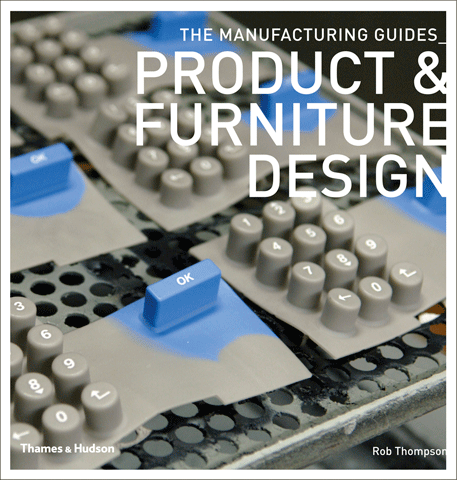
A valuable guidebook that describes more than 30 manufacturing processes, from the traditional and established to the cutting-edge.
When Rob Thompson launched his book ‘Manufacturing Processes For Design Professionals’ a few years back I was really impressed with it.
So, I was looking forward to his latest book ‘Product and Furniture Design’ dropping through my letterbox.
When it did, I wasn’t disappointed. Its not on the same scale as its predecessor, which is a very comprehensive 528 page resource book, but it very successfully pulls off what it sets out to achieve. Which is provide practical information that designers need to select the process to realise their designs.
As Thompson says in his introduction to the book: “This book equips designers with knowledge about some of the most exciting manufacturing processes and material technologies utilised in the production of everyday objects.”
The book is divided into three parts: forming technology, joining technology and finishing technology. Each of the 30 processes begins with a clear description of what it is, with the help of photography and illustrations.
A technical drawing helps to depict the inner workings of the technology and shows visually how the process works. There is also an ’Essential Information’ panel that provides a rough guide to five key features of each process. These include: quality; typical applications; cost and speed; materials; and environmental impacts.
The ‘Environmental Impacts’ is rather interesting because although you may think that a material is environmentally friendly often the process involved in forming it, is not. For instance, in the case of Investment Casting the book states that ‘Very little waste is produced that cannot be recycled. However, this is an energy intensive process’.
Each process also includes a step-by-step case study together with images that shows how a product or component has been manufactured by a leading international supplier.
For instance, the case study for the ‘Metal Spinning’ process is on the Grito Lampshade designed by El Ultimo Grito for Mathmos. It explains clearly how the process starts from when the metal blank is cut to when after spinning, the lampshade is punched, anodized outside and painted inside.
What I like about this book is that its very visual – it describes each process through the use of images so you can see for yourself what the process is and how it works.
There is no complicated or ‘flowery’ language. Instead it utilises an objective and concise writing style. Although the format may feel a bit like a school textbook, I think it works very well. It gives you a taster really of the different manufacturing processes and is a starting point for further reading or investigation.
The book will certainly be a valuable addition to the shelves of any product designer, engineer or even architect. Design students will also find it very useful. And even people like me, who are just interested in how things are made. A quick flick through spells out all the information you’ll need.
The blurb says that it’s a vital resource – I would have to agree.






